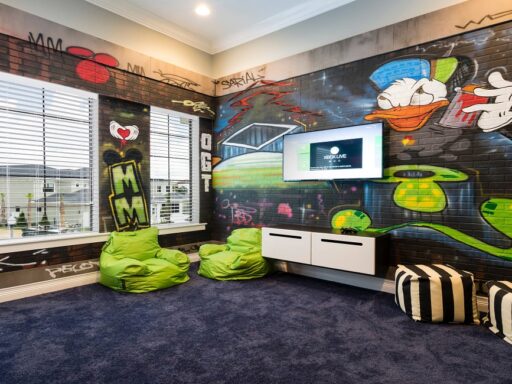In today’s rapidly evolving world, the push towards sustainability has become more critical than ever. With climate change, resource depletion, and environmental degradation posing significant challenges, the need for sustainable design practices is undeniable. For teams working in various sectors, integrating sustainable design principles can lead to innovative solutions that not only address environmental concerns but also enhance efficiency and create value. This blog explores key sustainable design practices that teams can adopt to contribute to a greener future.
Understanding Sustainable Design
Sustainable design is an approach that seeks to minimize negative environmental impacts through thoughtful planning and execution. It encompasses the entire lifecycle of a product or project, from conception to disposal, ensuring that resources are used efficiently, waste is minimized, and the overall ecological footprint is reduced. Sustainable design is not limited to architecture or product design; it applies to processes, systems, and services across all industries.
Key Principles of Sustainable Design
- Resource Efficiency: Using resources efficiently is a cornerstone of sustainable design. This includes minimizing the use of non-renewable resources, optimizing material usage, and reducing energy consumption. Teams should prioritize renewable resources and materials with lower environmental impacts.
- Lifecycle Thinking: Considering the entire lifecycle of a product or project is essential. This involves evaluating the environmental impact at every stage, from raw material extraction and production to usage and end-of-life disposal. Lifecycle thinking helps identify opportunities for improvement and ensures that sustainability is integrated into every phase.
- Waste Reduction: Reducing waste is crucial for sustainability. Teams should focus on designing products and processes that generate minimal waste and promote recycling and reuse. Implementing circular economy principles, where materials are continually repurposed, can significantly reduce waste.
- Energy Efficiency: Energy consumption is a major contributor to environmental impact. Sustainable design practices emphasize energy efficiency in buildings, products, and processes. This includes using energy-efficient technologies, optimizing energy use, and exploring renewable energy sources.
- Human-Centered Design: Sustainable design should consider the needs and well-being of people. Human-centered design ensures that solutions are not only environmentally friendly but also practical, accessible, and beneficial to users. This approach fosters innovation and enhances the overall user experience.
Implementing Sustainable Design in Teams
1. Foster a Culture of Sustainability
Creating a culture that values sustainability is the first step towards integrating sustainable design practices. Team leaders should emphasize the importance of sustainability and encourage team members to adopt eco-friendly practices. This can be achieved through regular training, awareness programs, and setting sustainability goals.
2. Collaborative Design Process
Sustainable design requires a collaborative approach. Teams should involve stakeholders from different disciplines to bring diverse perspectives and expertise. Collaborative design processes enable the identification of innovative solutions that address environmental, social, and economic aspects of sustainability.
3. Sustainable Materials and Technologies
Choosing sustainable materials and technologies is vital for reducing environmental impact. Teams should research and select materials with low environmental footprints, such as recycled or biodegradable materials. Additionally, adopting energy-efficient technologies and practices can significantly contribute to sustainability.
4. Lifecycle Assessment (LCA)
Lifecycle Assessment (LCA) is a powerful tool for evaluating the environmental impact of a product or process throughout its lifecycle. Teams can use LCA to identify areas for improvement and make informed decisions that enhance sustainability. LCA helps in understanding the trade-offs and benefits of different design choices.
5. Design for Disassembly and Recycling
Designing products for disassembly and recycling is a key sustainable design practice. This approach ensures that products can be easily taken apart at the end of their life, facilitating the reuse and recycling of components. Teams should consider modular designs and standardized components to simplify disassembly.
6. Energy Management
Effective energy management is essential for reducing environmental impact. Teams should implement energy-efficient practices, such as using LED lighting, optimizing heating and cooling systems, and adopting renewable energy sources. Regular energy audits can help identify areas for improvement and track progress.
7. Sustainable Packaging
For teams involved in product design, sustainable packaging is a critical consideration. Reducing packaging waste, using recyclable or biodegradable materials, and minimizing packaging size can significantly reduce environmental impact. Sustainable packaging not only benefits the environment but also appeals to eco-conscious consumers.
8. Monitoring and Reporting
Monitoring and reporting sustainability metrics are essential for tracking progress and identifying areas for improvement. Teams should establish key performance indicators (KPIs) related to sustainability and regularly review and report on these metrics. Transparent reporting fosters accountability and demonstrates a commitment to sustainability.
Case Study: Sustainable Design in Action
To illustrate the impact of sustainable design practices, let’s look at a case study of a team that successfully implemented these principles.
Case Study: GreenTech Innovations
GreenTech Innovations, a technology company, embarked on a mission to integrate sustainable design practices into their product development process. The team started by conducting a comprehensive lifecycle assessment of their flagship product, identifying key areas for improvement.
Through collaborative efforts, the team redesigned the product using recycled materials and optimized the manufacturing process to reduce waste. They also implemented energy-efficient technologies, reducing the product’s energy consumption by 30%. Additionally, the product was designed for easy disassembly, ensuring that components could be recycled at the end of their life.
GreenTech Innovations also focused on sustainable packaging, reducing packaging size and using biodegradable materials. The company established sustainability KPIs and regularly reported on their progress, demonstrating their commitment to a greener future.
As a result of these efforts, GreenTech Innovations not only reduced their environmental impact but also gained a competitive edge in the market. Customers appreciated the company’s dedication to sustainability, leading to increased brand loyalty and sales.
Conclusion
Sustainable design practices are essential for teams working towards a greener future. By adopting principles such as resource efficiency, lifecycle thinking, waste reduction, and energy efficiency, teams can create innovative solutions that benefit both the environment and society. Implementing sustainable design requires a collaborative approach, a commitment to continuous improvement, and a culture that values sustainability. As illustrated by the case study of GreenTech Innovations, sustainable design not only addresses environmental challenges but also creates value and enhances competitiveness. Together, teams can make a significant impact on the journey towards a sustainable future.





